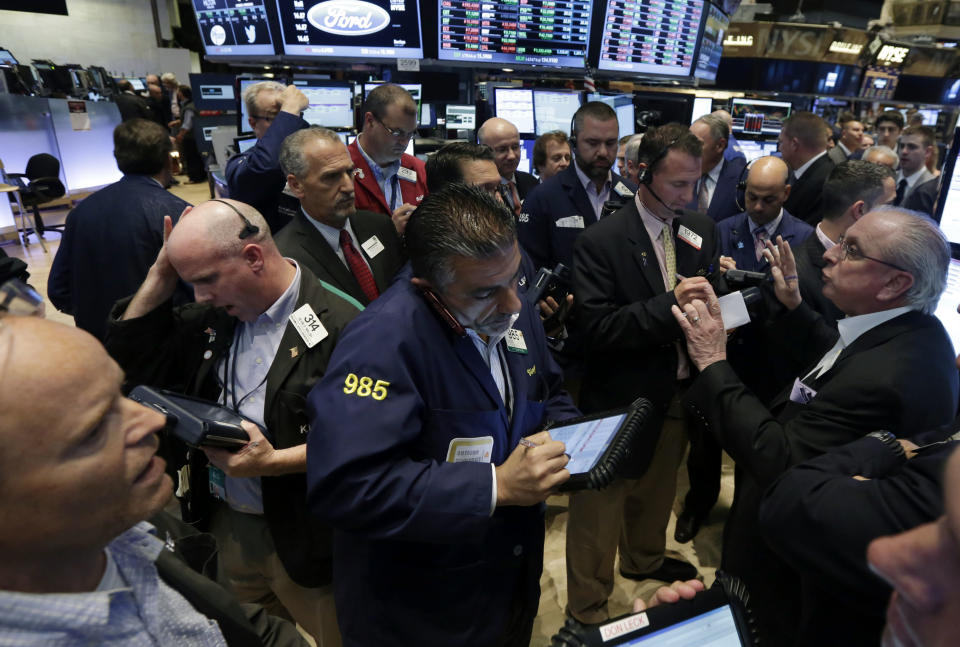3 things that could derail the bull market in 2020
It won’t be all sunshine and roses in the stock market in 2020, even though it feels that way at the moment.
About $6 trillion in paper wealth has been created this year from the stock market alone, according to Wilshire Associates. The Dow Jones Industrial Average has gained an impressive 18.7% on the year, shrugging off the financial impact to the benchmark’s multinational components from the U.S.-China trade war. That resilience in the face of great economic uncertainty (and souring global macroeconomic data) has extended to the S&P 500, which is up a cool 23.4% this year.
And last but not least, a mixed stretch of profits from Amazon and Congress verbally pounding Facebook hasn’t sent tech investors into a cave — the Nasdaq Composite has surged 28%.
That said, 2020 outlooks from Wall Street have started to roll in. And while they are somewhat upbeat per the usual ahead of a New Year, certain forecasters are highlighting some key risks for investors to consider.
The first is a new wave of earnings estimate cuts for 2020 on the part of Wall Street analysts. S&P 500 companies are seen posting about 10% earnings growth next year, which looks too high in the context of no true progress on trade with China, a Federal Reserve that may stand pat on further rate cuts and the unknown that will be the presidential election. Remember, markets have rallied since the fall mostly on hope that corporate earnings growth would re-accelerate in 2020. Anything that undermines that investment thesis would likely dent stocks.

Morgan Stanley strategist Mike Wilson thinks 2020 earnings growth will be close to zero and that downward revisions will begin in December and January as companies share guidance.
Wilson notes that 12-month forward profit estimates are already falling for small-cap companies at an accelerating rate.
“We would be careful interpreting the recent rally in asset prices as a definitively bullish signal on future growth given how much of it has been due to excess liquidity provisions from the Fed and ECB in particular,” Wilson writes.
2020 presidential election
The other two risks are arguably more obvious: politics and economic divergences.
“Election year in general poses a risk. I think it poses a risk more to sentiment than to reality, but will certainly be a source of market volatility in the new year,” Brown Brothers Harriman Chief investment strategist Scott Clemons said on Yahoo Finance’s The First Trade. Although to play devil’s advocate here, according to Ned Davis Research, the S&P 500 has gained about 9.5% during an election year.
But hey, the upcoming election year will be anything but normal — and could easily skew the historical trend.
“I am watching this tale of two economies in which we have the consumer part of our economy is great. Average hourly earnings growth is strong, housing is strong, employment is strong. All the tailwinds to consumption are in a good place. But manufacturing is a completely different story,” says Clemons. “That’s OK in the aggregate because the consumer is a much bigger part of the economy. But to the degree the woes of the manufacturing sector begin to influence the consumer sector and weigh on sentiment and employment, I think that is a risk as we head into 2020.”
2020 couldn’t get here quick enough.
Brian Sozzi is an editor-at-large and co-anchor of The First Trade at Yahoo Finance. Follow him on Twitter @BrianSozzi
Read the latest financial and business news from Yahoo Finance
SmileDirect co-founder: here’s what life will look like post IPO
Starbucks CEO on what China has in store for the coffee giant
Follow Yahoo Finance on Twitter, Facebook, Instagram, Flipboard, SmartNews, LinkedIn, YouTube, and reddit.

 Yahoo Finance
Yahoo Finance